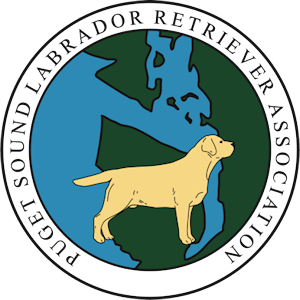Agility Competition
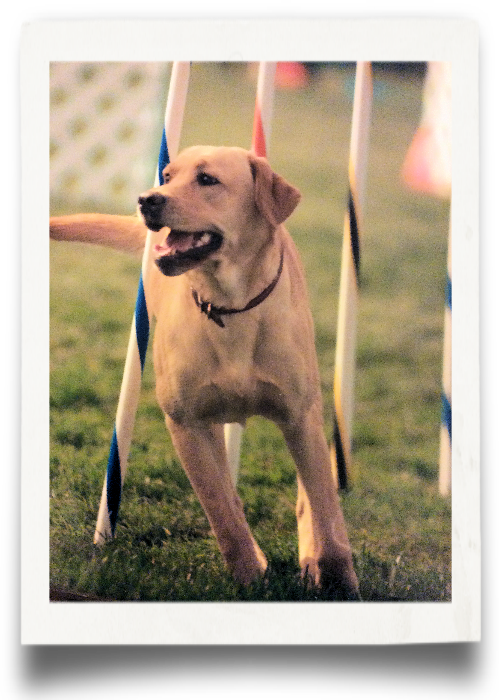
What is Conformation?
Want to learn about Conformation and Dog Shows? Visit our Conformation page for more details. [Read More]
What are Field Events?
Want to learn about Field Work and Retrieving Events? Visit our Field Competition page for more information. [Read More]
What is Obedience & Rally?
Want to learn about Obedience and Rally Competition? Visit our Obedience & Rally page for more details. [Read More]
What is Scent Work?
Want to learn about Tracking, Nose Work and Barn Hunt? Visit our Scent Work page for more information. [Read More]
What is Therapy Work?
Labrador Retrievers make wonderful Therapy and Service dogs. Visit our Therapy page for more details. [Read More]
Volunteer
Want to help make our events a success, and join in on the fun? Visit our Volunteer page to see the Volunteer Opportunities PSLRA currently has available. [Read More]
AKC Agility (from the AKC Web Site)
Per the AKC, “Agility is designed to demonstrate a dog’s willingness to work with its handler in a variety of situations. It is an athletic event that requires conditioning, concentration, training and teamwork. In an agility trial, a dog demonstrates its agile nature and versatility by following cues from the handler through a timed obstacle course of jumps, tunnels, weave poles and other objects. “
Types of Classes
There are several types of classes offered at an agility trial:
- Standard
- Jumpers with Weaves
- Fifteen And Send Time (FAST)
- Time 2 Beat (T2B)
The Standard class has contact obstacles, which have yellow “contact zones” at each end. Contact obstacles include the A-frame, dog walk and seesaw. The dog must place a least one paw in the contact zone in order not to receive a fault. This encourages safety in training and in running the course. The Standard class also has a variety of jumps; weave poles, pause table, and tunnels.
The Jumpers with Weaves class does not have contact obstacles or a pause table to slow the team’s forward momentum. This is a very fast course requiring instant decisions by the handler and close attention from the dog.
The FAST class is an additional test of strategy, skill, accuracy, speed, timing and distance handling, to demonstrate a dog’s athletic ability and willingness to work with its handler in a fast-paced atmosphere over a variety of agility obstacles.
As indicated by the title, the Fifteen and Send Time class uses fifteen (15) point-valued obstacles and/or obstacle combinations. The course will include a ‘Send Bonus’ or distance element that will award a bonus of twenty (20) points if completed successfully.
The optional Time 2 Beat (T2B) agility titling class is meant to challenge the handler/dog to set a clean efficient line with an emphasis on speed and accuracy. The dog that sets the quickest time in each jump height will set the time to beat for that jump height.
Levels of Agility Competition
There are three different levels of competition in agility:
- Novice: For the dog that is just starting in agility. There are 14 to 16 obstacles on this course. The focus of the Novice class is on performing the obstacles with minimal handling technique.
- Open: For the dog that has completed the Novice level. There are 16 to 18 obstacles on this course. The focus of the open class is on more difficult obstacle course performance with more handling skill required.
- Excellent / Master: For the dog that has completed the Open level. There are 18 to 20 obstacles on this course. The focus of the Excellent class is to provide the opportunity for dogs and handlers to demonstrate their superior skills in moving quickly and efficiently with close communication and teamwork through challenging agility courses. The Master level is the class where dog/ handler teams can earn the title, Master Agility Champion (MACH)/Preferred Agility Champion (PACH), from the Regular or Preferred Classes.
- Premier: An optional titling class as of 10/1/15. This class provides an opportunity for agility competitors to demonstrate different handling skills than those required for the Master Level Classes in Standard & Jumpers With Weaves. The Premier class focuses on handling the sequence or sequences of the day. Both Standard and JWW Premier courses will be Master level courses incorporating a number of elements that challenge the dog and handler in ways that are not seen on traditional AKC courses. These elements include sequences like threadles, back-side jumps, pull-throughs, layering, challenging weave pole entries, and longer running passes. One bi-directional jump or tunnel will be allowed to encourage handling strategies. Obstacle spacing on Premier courses may exceed the limits of those on Master courses. Premier courses will use the same obstacles as the corresponding Master course. At the judge’s discretion a viaduct may be used in place of the panel jump, there may be 3 tunnel passes and there will be no table. A Premier course will have 19 to 21 obstacles, 3 side switches, 4 Premier Elements and 5 Challenges. Courses will be judged using AKC Master scoring and hand signals.
How Agility is Scored
Agility is a time and fault sport where the qualifying requirements are more challenging as the competition class levels get higher. There are two types of faults: time and penalty. Time faults are given for every second a dog goes over the Standard Course Time as set by the length of the course.
Below are examples of Penalty Faults that a judge may assess a handler and dog:
- Taking an obstacle out of sequence
- Missing a contact zone
- Displacing a bar or panel on a jump
- Jumping off the pause table before the judge is through counting
- Running around or refusing the next obstacle
- Exceeding the amount of time set by the judge for running the course
- Touching either the dog or any obstacle by the handler while running the course
- Outside assistance may be penalized
- Handler failure to control the dog may be penalized
Agility Jump Heights
The classes are divided by jump heights in order to make the competition equal between the different sizes of dogs.
See AKC Agility Jump Height Card Policy And Measuring Procedure Guidelines
Regular Class
- 8″ Class – dogs up to 11″ at the shoulder
- 12″ Class – dogs over 11″ and up to 14″ at the shoulder
- 16″ Class – dogs over 14″ and up to 18″ at the shoulder
- 20″ Class – dogs over 18″ and up to 22″ at the shoulder
- 24″ Class – dogs over 22″ at the shoulder
- 26″ Class – dogs may be entered at this height at their owner’s discretion.
A dog may jump in a jump height class higher than his/her shoulder measurement, but never lower.
Preferred Class
This class affords an opportunity for a greater variety of dogs, and their handlers, to participate in the sport of agility. Handlers have the option to enter the Preferred classes with modified standards of lower jump heights and five additional seconds on the course. They must compete at the required jump height.
Qualifying Performance
A perfect score in any class at any level is 100. A dog must earn 3 qualifying scores under two different judges. The minimum score to qualify is 85 in all classes except in the Master class where the minimum score is 100. The minimum time allowed to run the course and the number of obstacles to complete successfully, increase as the level of difficulty increases.
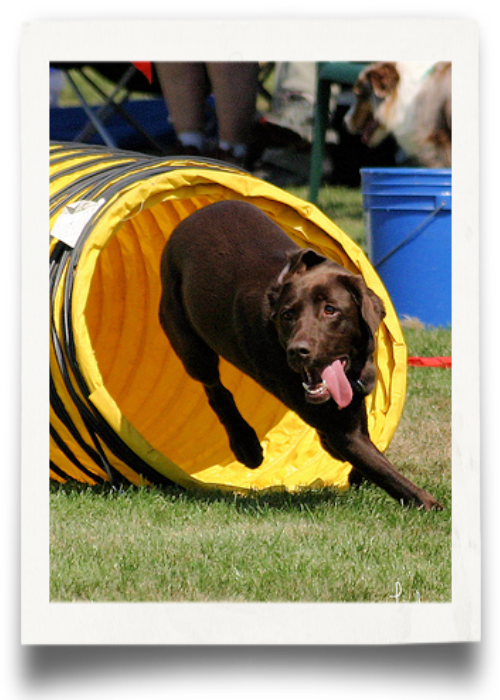
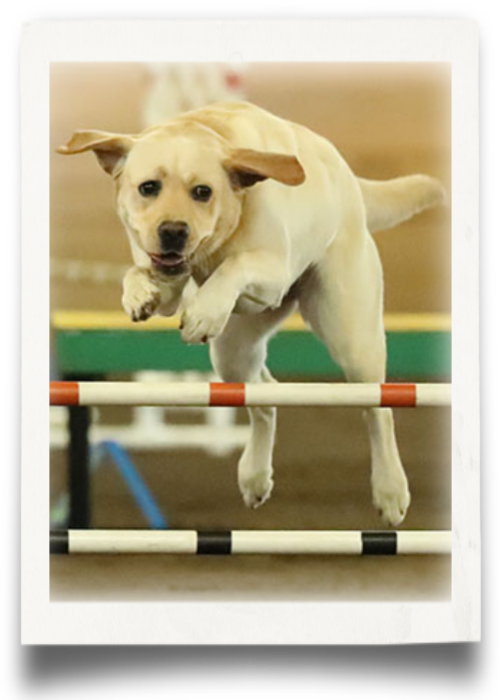
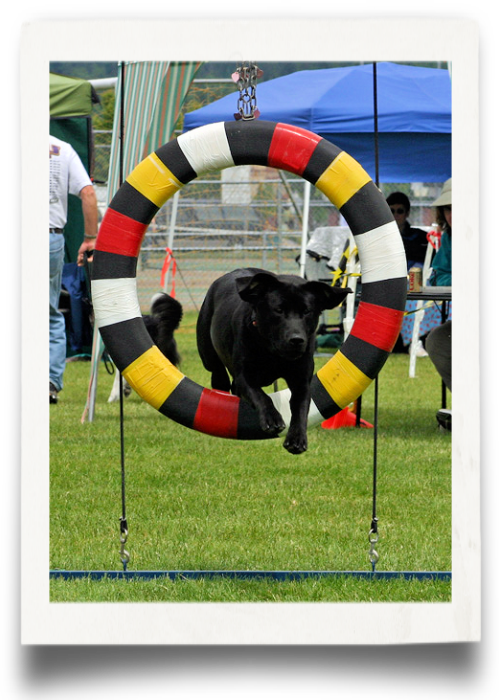
Volunteer Roles at Agility Trials
Overview
Volunteering at a trial is a great way to observe how a trial works, watch dogs in various classes, and meet fellow exhibitors. This list covers only those jobs assigned for the trial. The goal is for each volunteer to understand his or her responsibilities without feeling confused or intimidated. The most important thing about each of these jobs is making sure you are at your assigned job when scheduled. You will receive a worker schedule at the start of the trial. Please note where you are expected to be and when. It really helps move a trial along.
Course Builder
Course Builders move obstacles between classes as directed by the Chief Course Builder. Help move equipment between classes to set the course for the next class. You must be aware of when each class ends so the new course can be set quickly. Efficiency in course building can significantly affect the length of the trial. Generally, the Chief Course Builder (and then the judge during final “tweaking”) provides instruction as to what pieces of equipment are needed, and where to place them.
Gate Steward
Make sure dogs and handlers are ready at start line. Referring to the running order on the gate sheets, you check to see that the appropriate handlers and dogs are present and aware of their place in order. At the beginning of the class, you will ask the judge when s/he wants the next dog on the line. Inform handlers when they are to be going into the ring. The Gate Steward must not be shy, s/he should help nervous handlers by gently reminding them which dog they follow and when they should be entering the ring. The Gate Steward should also control the gate area, making sure that not too many dogs are congregating in that area and creating a potential problem. The Gate Steward also adjusts changes in the running order due to conflicts. Being a Gate Steward is a great way to get to know other handlers. Ideally, the gate steward should:
- Have the next three dogs ready to go.
- Send the next dog on the start line at the time that the judge has indicated.
- Alert the Scribe to dogs that are running out of order or that have scratched.
- Call height changes to pole setters “last dog at this height” and the next jump height.
Scribe
Mark down faults and points as directed by judge on the scribe sheet while each dog is running. Scribing differs for different classes. The judge will instruct you as to the meaning of various hand signals; s/he is always pleased to provide you with a quick one-minute primer on the signals if you ask. If you ever are unclear about a judge’s signal, wait until after that run and clarify before the next dog starts. It is important to verify that you have the correct scribe sheet for each dog. Important: The scribe must watch only the judge at all times during each run, never the dog or handler.
Timer (If not using electronic timers)
Use stopwatch to time a dog during a run. This job requires your full attention and no distractions, as focusing on the dog crossing the start line and finish line is critical. One person must time an entire jump height within a class to minimize timing differences. You will start the timer when the dog breaks the plane of the start line, and stop the timer when it breaks the plane of the final obstacle (finish line) in its attempt at taking the final obstacle. Before the class starts, the judge will give you specific instructions on timing a class and when and how the judge will want to release the next dog. The Timer can be another set of eyes on the judge for the Scribe so that if the judge calls faults, the scribe can write those faults down and the timer should be able to watch for any additional calls while the scribe is writing.
Timer (If using electronic timers)
Monitors timing equipment and communicates times to Scribe. As with timing with stopwatches, before the class starts, the judge will give you specific instructions on timing a class and when and how the judge will want to release the next dog. Should the dog start and run around the first obstacle, not starting the clock, the Timer must manually start the clock by press the START button on the timing equipment. Also, if the dog runs around the last obstacle and fail to stop the clock, the Timer must press the STOP button on the timing equipment. If a dog stops the clock inadvertently by taking the wrong obstacle during its run, the Timer will press the RESTART button to correct the time. The internal clock in the timing device keeps on timing even though the clock has stopped. Therefore, the time will correct itself. Once the dog finishes the run, the Timer communicates the time to the Scribe who writes it down on the scribe sheet. The Timer can be another set of eyes on the judge for the Scribe so that if the judge calls faults, the scribe can write those faults down and the timer should be able to watch for any additional calls while the scribe is writing.
Ring Crew – Bar Setter or Chute Straightener
Each ring needs 3 ring crew volunteers who are responsible for resetting bars if a dog knocks one off and straightening the chute after each dog goes through it (chutes, aka closed tunnels, are no longer used in AKC competition). Additionally, the ring crew changes the heights of the jumps, table, tire, and sometimes the A-frame, when the jump height changes. You sit on a chair inside the ring and watch each dog run. If a dog knocks a bar or otherwise displaces an obstacle, you wait until the dog is no longer running in your area of the course, and fix the obstacle.
Scribe Runner
The scribe runner takes the scribe sheet from the Scribe to the Score Table. This task is a bit easier on your body than leash running is — you get to sit for much of the time. Each dog’s faults and time (the score) are written down on a piece of paper by a scribe. This piece of paper needs to make its way from the score table in the ring to where the trial secretary is set-up, and that’s where you come in! You get to sit in a chair behind the scoring table (That’s where the timer and the scribe sit). After each run, the scribe will pass you the score sheet. After every three or four runs, you take these score sheets from the ring to the trial secretary so the dogs’ score can be processed. If a competitor asks to see their score sheet, it is OK for you to show it to them, BUT THEY MUST REMAIN IN YOUR POSSESSION until delivered to the trial secretary.
Leash Runner
A great starter job! It’s simple, it’s good exercise, and you get to see each dog’s run from start to finish. As the leash runner, you are expected to pick up the dog’s leash once they have started the course, and drop it off at a pre-determined spot near the exit so it is waiting for the competitor as they finish their run. Your goal is to be as unobtrusive as possible. Some handlers will hand you their dog’s leash, others will throw it towards you (stay alert, leash clips can be painful!), and many just drop it behind them.
It is important to wait until after the dog has begun running to pick up their leash, as you want to avoid inadvertently distracting the dog. You should also keep an eye on the dog while it is running in case something happens to terminate the run, such as the dog eliminating in the ring or the handler asking to be excused. In those cases, you will want to bring the leash directly to the competitor or meet them right by the exit.
